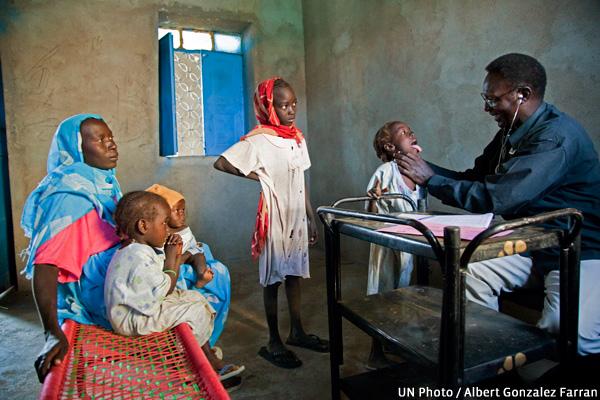UHC explained: Universal Health Coverage and the Sustainable Development Goals

UHC is the best way to achieve the health Sustainable Development Goal. Countries should plan and implement strategies to reach UHC in an equitable way, as the best way to achieve the overall Sustainable Development Goal on health.
What is the UHC target in the SDGs?
Target 3.8 relates specifically to UHC and is:
“Achieve universal health coverage, including financial risk protection, access to quality essential health-care services and access to safe, effective, quality and affordable essential medicines and vaccines for all.”
There are nine health targets included in the health SDG, why should we give a priority to achieving the UHC target (3.8)?
Global health agencies and governments need to prioritise and to move away from vertical interventions that just tackle individual diseases, and to focus more on improving broader health systems.
Achieving the SDG target on UHC will automatically achieve the majority of the other eight targets that deal with different diseases, population groups and health systems reforms.
Who else is promoting UHC in this way?
The World Health Organisation and the World Bank are both promoting UHC as the most important immediate goal for global health. In 2013 WHO’s Director General, Margaret Chan said:
“UHC is the most important concept that public health has to offer”.
Furthermore The Government of Japan will promote UHC as a global health goal at the G7 Summit in Japan in May 2016. Germany, France, China and Thailand are also leading advocates for UHC.
Many of the leading health NGOS are also championing UHC including: Save the Children, Oxfam and MSF.
Why is it important to move away from vertical interventions restricted to selected diseases? Haven’t these programmes delivered benefits?
In the era of the MDGs, vertical health interventions, often funded through donor projects, helped to reduce the burden of a number of infectious diseases such as HIV, tuberculosis and malaria. However, creating independent health systems for individual diseases is inefficient and can lead to distortions in health funding leaving other priorities underfunded.
Achieving UHC to reach the new health SDG will require addressing a broader range of health problems including a growing burden of non-communicable diseases (e.g. cardiovascular diseases, diabetes, cancer and mental health). Most health agencies are therefore advocating a change in approach away from vertical programmes towards strengthening broader health systems in areas such as human resources, medicine supplies, information systems, financing and governance.
| Previous page | |
| Your questions explained: Universal Health Coverage |



